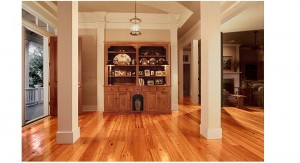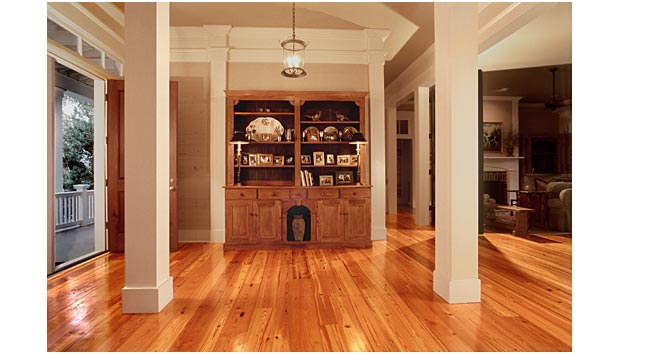Hardwood floors apart from being reliable and durable, gives any home a classic touch. Its elegance and exclusiveness cannot be achieved with any other type of flooring. Hardwood floors are versatile and can be laid in almost any part of a home. There are numerous varieties of hardwoods to choose from, like oak, teak, elm, walnut, maple, rosewood and many others. The durability, hardness and colour vary depending on the type of wood. The hardness of Chestnut and Douglas fir is very low when compared to the hardness of Caribbean Cherry or Brazilian Walnut. The moisture content in the wood affects its stability and durability adversely.
Hardwood flooring are classified into different grades like clear, select, common 1, common 2 and grade 1 to 3. The grading depends on the exterior look of the un-finished hardwood flooring.
Hardwood flooring provides a timeless elegance to any room when it is laid in sync with the interior décor of the room. At the moment of installing hardwood floors you can there are different methods to choose and it includes:

Glue Down method: Here parquets or wooden panels are glued to a subfloor which can be made of wood or concrete.
Nail Down method: Nails of ¾” thickness are used to bind hardwood on to a subfloor that is of the same grade or above grade than the hardwood.
Staple Down method: Here a pneumatic stapler is used to attach the hardwood on to a subfloor instead of nails. This method is the easiest of the three and is mostly used by DIY aficionados.
Floating method: This method is employed to lay hardwood on uneven surfaces. A layer of foam is placed in-between the hardwood and the subfloor.
Once the hardwood flooring is laid perfectly they are very easy to maintain. Below you can find a few tips to keep your hardwood flooring sleek and shining.
• Regular maintenance like vacuuming or sweeping is a must to remove the dust that might otherwise scratch the flooring. It is important for this process to choose a good vaccum cleaner to help you in this job.
• You can place attractive doormats or rugs near doorways to prevent transfer of sand or dirt from shoes to the flooring.
• Since wood expands and contracts with temperature, the relative humidity of a room should always be maintained at about 45%.
• You should pad the legs of the furniture to prevent scratching while moving them.
• Hardwood floors are sensitive to light. You should protect your floors from direct light, both natural and artificial to prevent discolouration of the hardwood flooring.
• You can also add some rugs in frequently used places like washbasins, workstations, etc, to protect the hardwood flooring from scratch, water or soap.






